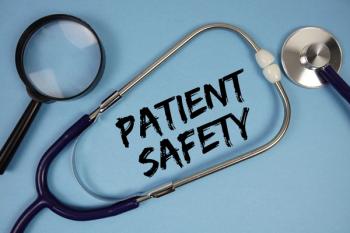Care provided by community pharmacists for several common conditions could result in greater access to health care services for patients in rural and underserved areas and public health cost savings, according to new research published in ClinicoEconomics and Outcomes Research.1 The authors said the findings support the benefits of removing barriers to clinical care opportunities.
According to data from the Bureau of Health Workforce, there is projected to be a shortage of nearly 70000 primary care physicians in the United States by 2036.2 This scarcity of primary care providers, combined with the fact that many Americans face numerous barriers to accessing timely medical care, highlight the critical need for more equitable, efficient health care options.3
Key Takeaways
- Care provided by community pharmacists for minor ailments can improve access to health services in rural and underserved areas, helping address the projected shortage of nearly 70,000 primary care physicians in the U.S. by 2036.
- Pharmacist-provided care is significantly less expensive than traditional care settings. The study found that emergency departments, urgent care, and primary care cost $505.04, $122.74, and $95.97 more, respectively, than care provided by pharmacists, potentially saving the healthcare system $235 million.
- Community pharmacists can provide care of comparable quality to traditional care sites for common conditions like hormonal contraception, asthma, and urinary tract infections. This efficient use of pharmacists' expertise can reduce the burden on primary and emergency care facilities.
“Throughout the years, pharmacists’ roles have evolved from solely medication dispensing functions to providing medication therapy management and other healthcare services designed to improve patient outcomes,” the authors wrote. “The potential for pharmacists’ clinical expertise to improve patient outcomes has been well studied in a range of scenarios, from examination of pharmacist-recommended clinical interventions implemented by a provider to direct pharmacist-provided care in managing acute and chronic disease states.”
READ MORE: Podcast: Litigation Lawyer on PBMs and Defending Independent Pharmacies
Investigators from Washington State University conducted a study to compare care for minor ailments provided by community pharmacists to care provided at 3 traditional sites of care to determine if pharmacist provided care resulted in improved access, was of comparable quality, and if it reduced financial strain on the health care system. Data for the study was gathered from 46 pharmacies and 175 pharmacists from 2016 through 2019, as well as a large health plan that matched episodes of care conditions to those seen in the pharmacy setting.
Pharmacists participating in the study had access to an online training certificate program that focused on ailments and conditions commonly seen in a community pharmacy setting. Live sessions that discussed patient cases were also held. The investigators visited the participating pharmacies every 4 weeks to collect data over the 3 year study period. The data included patient demographics, insurance status, health history, and condition-specific information, such as recommended treatments.
The study included 496 patients who were treated at 1 of the participating pharmacies and 84555 patients from the health care plan data. The 5 most common conditions that were compared in the study included hormonal contraception, asthma, urinary tract infection, allergies, and headache. The study found that the care provided by the pharmacist cost significantly less when compared to the traditional 3 sites of care, which were: primary care, urgent care, and the emergency department.
For all of the conditions combined, the median cost of care at the 3 traditional care sites was $277.78 higher compared to care provided by the pharmacy. Compared to care by pharmacies, emergency departments cost $505.04 more, urgent care cost $122.74 more, and primary care cost $95.97 more. The data showed that if the 84555 patients from the health plan data had seen a community pharmacist, it would have resulted in $235000000 in cost savings for the health care system.
“The findings show that pharmacists, especially in the outpatient community setting, are a viable solution to part of our patient access to care problem in our state and country,” Julie Akers, lead author on the study, said in a release.4 “Pharmacists are trained and qualified to do this work, and unfortunately in many settings, highly underutilized. And they could have a huge impact on how fast patients access care, which can minimize the complexity and the progression of their condition.”
READ MORE: Public Health Resource Center
Pharmacy practice is always changing. Stay ahead of the curve: Sign up for our free Drug Topics newsletter and get the latest drug information, industry trends, and patient care tips, straight to your inbox.
References
1. Akers JM, Miller JC, Seignemartin B, et al. Expanding Access to Patient Care in Community Pharmacies for Minor Illnesses in Washington State. Clinicoecon Outcomes Res. 2024;16:233-246. Published 2024 May 3. doi:10.2147/CEOR.S452743
3. Caraballo C, Ndumele CD, Roy B, et al. Trends in Racial and Ethnic Disparities in Barriers to Timely Medical Care Among Adults in the US, 1999 to 2018. JAMA Health Forum. 2022;3(10):e223856. doi:10.1001/jamahealthforum.2022.3856
4. Zaske S. Pharmacists prove effective, less costly care option for minor illnesses. News Release. WSU Insider. May 28, 2024. Accessed May 28, 2024. https://news.wsu.edu/press-release/2024/05/28/pharmacists-prove-effective-less-costly-care-option-for-minor-illnesses/














































































































































